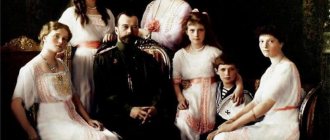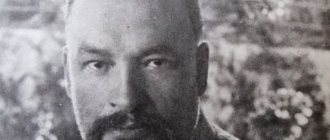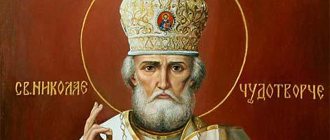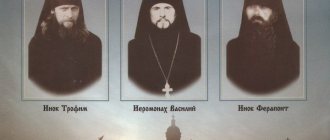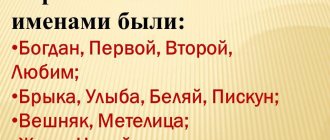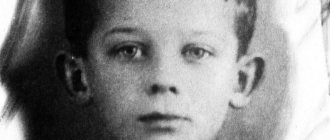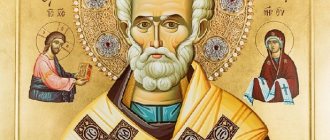Who are the Royal Martyrs
Royal Passion-Bearers, Royal Martyrs, Royal Family - this is how, after canonization, the Russian Orthodox Church calls the last Russian Emperor Nicholas II and his family: Empress Alexandra Feodorovna, Tsarevich Alexei, Grand Duchesses Olga, Tatiana, Maria and Anastasia. They were canonized for the feat of martyrdom - on the night of July 16-17, 1918, on the orders of the Bolsheviks, they, along with the court doctor and servants, were shot in Ipatiev’s house in Yekaterinburg.
Foreign policy
The activities of the Russian Empire in the international arena fell into 2 main directions:
- Preventing new European wars.
- Strengthening the country's influence in the Far East, confronting Japan as a strong adversary and competitor in this region.
In 1904, an acute conflict broke out between the empire and its eastern neighbor. The reason was territorial disputes. In addition, the ruler was confident of an easy victory.
A small, victorious war was supposed to influence the patriotic mood of the population, cause an upsurge in society and reduce the temperature, diverting attention from internal problems.
Nikolay 2
The Russo-Japanese War lasted until 1905 and ended in a catastrophic defeat. The conditions put forward by the winners were humiliating.
The emperor also failed to solve the peacekeeping task. The European powers were in a state of deep contradictions. Armed confrontation was a matter of time.
In 1914, the First World War broke out, which lasted until 1918 and claimed many lives of Russian soldiers and provoked poverty and decline.
Nicholas II failed to achieve real success in the international arena.
1917: One year - two revolutions. Documentary 2017
Murder of the Romanov family
The last Russian emperor, Nicholas II Romanov, abdicated the throne on March 2, 1917. After his abdication, he, along with his family, doctor and servants, were placed under house arrest in the palace in Tsarskoye Selo. Then, in the summer of 1917, the Provisional Government sent the prisoners into exile in Tobolsk. And finally, in the spring of 1918, the Bolsheviks exiled them to Yekaterinburg. It was there that on the night of July 16-17, the Royal Family was shot - by order of the executive committee of the Ural Regional Council of Workers', Peasants' and Soldiers' Deputies.
Some historians believe that the order for execution was received directly from Lenin and Sverdlov. The question of whether this is so is controversial; perhaps historical science has yet to find out the truth.
Very little is known about the Ekaterinburg period of exile of the Royal Family. Several entries in the emperor's diary have reached us; There are testimonies from witnesses in the case of the murder of the Royal Family. In the house of engineer Ipatiev, Nicholas II and his family were guarded by 12 soldiers. Essentially, it was a prison. The prisoners slept on the floor; the guards were often cruel to them; prisoners were allowed to walk in the garden only once a day.
The royal passion-bearers courageously accepted their fate. A letter from Princess Olga has reached us, where she writes: “Father asks us to tell all those who remained devoted to him, and those on whom they may have influence, that they do not take revenge for him, since he has forgiven everyone and is praying for everyone, and so that they do not avenge themselves, and so that they remember that the evil that is now in the world will be even stronger, but that it is not evil that will defeat evil, but only love.”
Those arrested were allowed to attend services. Prayer was a great consolation for them. Archpriest John Storozhev performed the last service in the Ipatiev House just a few days before the execution of the Royal Family - July 14, 1918.
On the night of July 16-17, the security officer and leader of the execution, Yakov Yurovsky, woke up the emperor, his wife and children. They were ordered to gather under the pretext that unrest had begun in the city and they urgently needed to move to a safe place. The prisoners were escorted to a semi-basement room with one barred window, where Yurovsky informed the Emperor: “Nikolai Alexandrovich, according to the resolution of the Ural Regional Council, you and your family will be shot.” The security officer shot several times at Nicholas II, and other participants in the execution shot at the rest of the condemned. Those who fell but were still alive were finished off with shots and bayonets. The bodies were taken out into the yard, loaded into a truck and taken to Ganina Yama - an abandoned Isetsky. There they threw it into a mine, then burned it and buried it.
Along with the Royal family, the court doctor Yevgeny Botkin and several servants were shot: the maid Anna Demidova, the cook Ivan Kharitonov and the valet Alexei Trupp
On July 21, 1918, during a service in the Kazan Cathedral in Moscow, Patriarch Tikhon said: “The other day a terrible thing happened: the former Sovereign Nikolai Alexandrovich was shot... We must, obeying the teaching of the word of God, condemn this matter, otherwise the blood of the executed person will fall on us, and not only on those who committed it. We know that he, having abdicated the throne, did so with the good of Russia in mind and out of love for her. After his abdication, he could have found security and a relatively quiet life abroad, but he did not do this, wanting to suffer with Russia. He did nothing to improve his situation and resignedly resigned himself to fate.”
For many decades, no one knew where the executioners buried the bodies of the executed Royal Martyrs. And only in July 1991, the presumed remains of five members of the imperial family and servants were discovered near Yekaterinburg, under the embankment of the Old Koptyakovskaya Road. The Russian Prosecutor General's Office opened a criminal case and during the investigation confirmed that these were indeed prisoners of the Ipatiev House.
After several years of research and public controversy, on July 17, 1998, the martyrs were buried in the Peter and Paul Cathedral in St. Petersburg. And in July 2007, the remains of the son of Tsarevich Alexei and Grand Duchess Maria were found.
First revolution
In 1904, strikes and unrest continued. They traveled around St. Petersburg and other cities. If earlier people expressed purely economic demands, now slogans were heard about the introduction of universal suffrage, the transfer of factories to the working people, and land to the peasantry.
On January 9, 1905, workers, led by priest Gapon, moved to the Winter Palace to appeal to the emperor. However, instead of a ruler, the petitioners were met by armed forces.
Nicholas II's office in the Winter Palace
As a result of the shooting of the demonstration, according to various estimates, up to a thousand people died. The myth of the good sovereign finally fell apart, showing the true face of power.
The events of that day were called “Bloody Sunday.” The shooting of peaceful workers was the last straw. It is from this moment that the beginning of the first revolution can be counted.
Bloody Sunday January 9, 1905
Events developed largely spontaneously. However, the situation was more than threatening. Nicholas II made new concessions and on August 6 approved the creation of the State Duma. However, the majority in it received the nobility.
People realized that this was just an imitation of the constitutional process. Therefore, discontent flared up with renewed vigor.
By the fall, the number of protesters reached several million people. Nicholas had to begin transforming the country into a constitutional monarchy.
- The Duma received legislative powers.
- An election law was developed in which a variety of segments of the population participated.
- At the end of April 1906 the first Constitution was published.
- The State Council became the upper house of parliament.
During the period of the Duma's work, it was dissolved and re-assembled several times, because the composition categorically did not suit the current government. She continued to resist progressive changes, which were already inevitable in the conditions of the early 20th century.
Nikolay 2 with his family
In April 1906, at the instigation of the emperor, Pyotr Stolypin became Minister of Internal Affairs. He took up the task of modernizing the current system, intending to improve the country's well-being, but not change the established order.
- The agrarian reform aimed to develop the initiative of the peasantry locally. People were given the opportunity to buy land, and the right of private property was established.
- The zemstvo reform increased the independence of local governments.
- Military reforms streamlined the recruitment processes.
The modernization was not completed. And those measures that were completed could not affect the fate of the country and the mood of the people. Moreover, there was no longer any time left for their high-quality implementation.
In 1907, the intensity of passions subsided. A decade of relative calm began.
Canonization of the Royal Family
People abroad have been praying for the repose of the Royal Family since the 1920s. In 1981, the Russian Orthodox Church Abroad canonized Nicholas II and his family.
The Russian Orthodox Church canonized the Royal Martyrs almost twenty years later - in 2000: “To glorify the royal family as passion-bearers in the host of new martyrs and confessors of Russia: Emperor Nicholas II, Empress Alexandra, Tsarevich Alexy, Grand Duchesses Olga, Tatiana, Maria and Anastasia.”
Reverence
As Russian church leaders believe, the reverent respect for the anointed saint characteristic of the Russian people, the tragic circumstances of his death, as well as the pity that the death of innocent children caused, contributed to the attitude of the royal family not as victims of political repression, but as Christians. martyrs. Therefore, the veneration of the Romanovs began almost immediately, which continued throughout the entire Soviet period of our history. These sentiments were especially strong in emigrant circles.
Thus, in the emigrant press there were reports of miracles performed by the royal martyrs, for example, the streaming of myrrh from icons with their images. In 1981, the Council of Bishops of the Russian Church Abroad canonized the Romanovs as martyrs. On July 16, 1989, in the vacant lot where Ipatiev’s house once stood, a prayer service was held in memory of the Romanovs. On August 18, 1990, a wooden cross was installed at this place, near which prayers and akathists were read several times a week.
Why do we honor the Royal Passion-Bearers?
Archpriest Igor FOMIN, rector of the Church of the Holy Blessed Prince Alexander Nevsky at MGIMO:
“We honor the royal family for their devotion to God; for martyrdom; for giving us an example of real leaders of the country who treated it like their own family. After the revolution, Emperor Nicholas II had many opportunities to leave Russia, but he did not take advantage of them. Because he wanted to share the fate with his country, no matter how bitter this fate was.
We see not only the personal feat of the Royal Passion-Bearers, but the feat of all that Rus', which was once called leaving, but which is in fact abiding. As in 1918 in the Ipatiev House, where the martyrs were shot, so here, now. This is a modest, but at the same time majestic Rus', in contact with which you understand what is valuable and what is of secondary importance in your life.
The royal family is not an example of correct political decisions; the Church glorified the Royal Passion-Bearers not for this at all. For us, they are an example of human attitude towards the ruler towards those over whom he is placed - towards the people.”
Ascension to the throne
On November 1, 1894, Emperor Alexander III died. Immediately after this, on the 21st, Nicholas II took over the task of governing the state. On the same day, the country's highest dignitaries swore allegiance to the new sovereign. Nicholas ascended the throne. And already in November the wedding of the young emperor and Alexandra Feodorovna took place.
Coronation of Nicholas II
Immediately after his accession, Nicholas 2 took several actions. He removed Joseph Gurko, governor of the Kingdom of Poland, from his post because he was too controversial. He also appointed a new Minister of Foreign Affairs. He then settled international disputes with England and China regarding the delimitation of territories.
The expression of the future political course of the new ruler was the speech he delivered to his subjects and their representatives at the end of January 1895.
Nicholas II spoke in favor of continuing the conservative course pursued by his late father. He did not want and did not intend to allow the majority of the population to manage state affairs.
According to researchers, this speech became the cornerstone of the emperor’s policy, as well as the attitude of his subjects and the civilized world community towards him.
Nikolay 2 with friends
Hopes for change were not justified. With a short-sighted statement, the newly-made ruler alienated the entire educated, enlightened part of society.
It was the speech of Nicholas II that became the basis for the further growth of revolutionary sentiments and the final cooling of the intelligentsia and the radical public towards Russian power.
Social upheaval has become a matter of time. As history has shown, quite soon. Because it was no longer possible to count on reasonable constitutional reforms from above.
The coronation of Emperor Nicholas 2 took place on May 26, 1896. The celebration of the ruler's ascension to the throne ended in tragic events. More than a thousand people died as a result of the stampede.
1896 Coronation of Nicholas II
Immediately after becoming the official ruler, Nicholas went abroad and made several foreign trips. During the discussion of the international agenda with the authorities of England and France, the sovereign’s inconstancy became evident.
As those close to him noted, he changed points of view very quickly and could not adhere to one specific line, which created unnecessary tension and unpredictability in relations between the Russian Empire and neighboring countries.
Icon of the Royal Martyrs
Traditionally, icon painters depict the Royal Passion-Bearers without a doctor and servants, who were shot along with them in Ipatiev’s house in Yekaterinburg. We see on the icon Emperor Nicholas II, Empress Alexandra Feodorovna and their five children - princesses Olga, Tatiana, Maria, Anastasia and the heir Alexei Nikolaevich.
In the icon, the Royal Passion-Bearers hold crosses in their hands. This is a symbol of martyrdom, known from the first centuries of Christianity, when followers of Christ were crucified on crosses, just like their Teacher. At the top of the icon two angels are depicted; they carry the image of the “Sovereign” icon of the Mother of God.
Second and third revolutions (February, October)
As a result of the First World War, a significant part of the male population was mobilized. Economic resources were also wasted. The villages fell into disrepair and the standard of living dropped sharply.
The policy of the emperor, who continued to adhere to a conservative course and did not think about further reforms, also caused dissatisfaction. In addition, the authorities discredited themselves by their connection with Grigory Rasputin, who was an extremely hated figure.
G. Rasputin
The situation was aggravated by the massive discontent of the progressive part of the population, the liberal-minded Duma members, who did not have sufficient powers to change the current state of affairs. There was no unity at the very top of the government.
All these factors overlapped each other. The February Revolution began in 1917 as a spontaneous event. Strikes, riots, and demonstrations took over the entire country. In March, the armed forces went over to the side of the rebels. Petrograd found itself in the hands of protesters.
Nicholas II's generals behaved insecurely and were unable or unwilling to participate in suppressing the uprising.
February Revolution of 1917
On March 15, the emperor officially abdicated the throne in favor of his younger brother, Mikhail Alexandrovich. However, after some thought and consultations with those close to him, he did not dare to take power.
On the 21st, the emperor, who wanted to leave for England, was decided to be detained. From that moment on, he was considered arrested. Power finally passed into the hands of the rebels, the reign of Nicholas 2 was over.
October Revolution 1917
